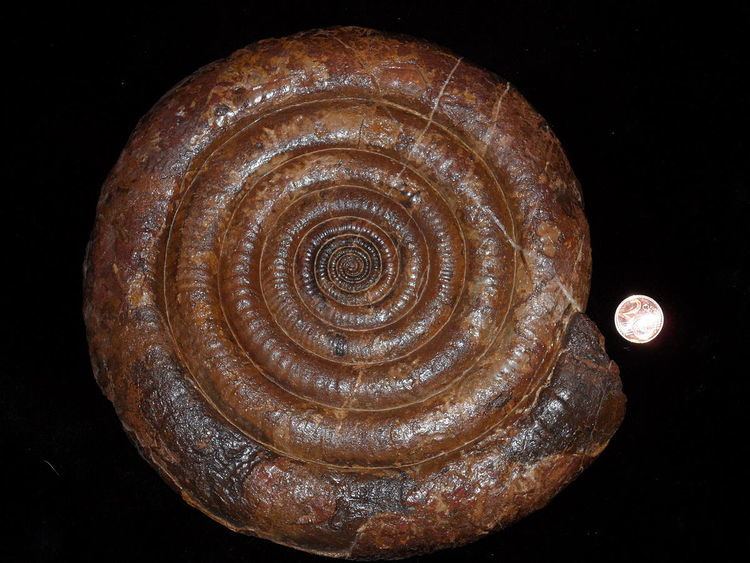 | ||
The Hettangian is the earliest age or lowest stage of the Jurassic period of the geologic timescale. It spans the time between 201.3 ± 0.2 Ma and 199.3 ± 0.3 Ma (million years ago). The Hettangian follows the Rhaetian (part of the Triassic period) and is followed by the Sinemurian.
Contents
In European stratigraphy the Hettangian is a part of the time span in which the Lias was deposited. An example is the British Blue Lias, which has an upper Rhaetian to Sinemurian age. Another example is the lower Lias from the Northern Limestone Alps where well-preserved but very rare ammonites, including Alsatites, have been found.
Stratigraphic definitions
The Hettangian was introduced in the literature by Swiss palaeontologist, Eugène Renevier, in 1864. The stage takes its name from Hettange-Grande, a town in north-eastern France, just south of the border with Luxembourg on the main road from Luxembourg City to Metz.
The base of the Hettangian stage (which is also the base of the Lower Jurassic series and the entire Jurassic system) is defined as the place in the stratigraphic column where fossils of the ammonite genus Psiloceras first appear. A global reference profile (a GSSP) for the base was defined 2010 at the Kuhjoch in the Karwendel in western Austria. The top of the Hettangian stage (the base of the Sinemurian) is at the first appearances of ammonite genera Vermiceras and Metophioceras.
Biostratigraphy
The Hettangian contains three ammonite biozones in the Tethys domain:
†Ammonites
At the end of the Triassic period, the ammonites died out almost entirely. During the Hettangian, however, the "Neoammonites" developed relatively quickly, so that even in the middle Hettangian a large number of genera and species existed.
